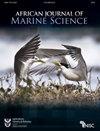摩洛哥Oualidia泻湖近期沉积物中甲藻囊肿组合的分布,重点是有毒物种
IF 1.4
4区 生物学
Q3 MARINE & FRESHWATER BIOLOGY
引用次数: 1
摘要
有害藻华(HABs)正变得越来越广泛和频繁,威胁着社会生态系统和人类健康。我们确定了位于摩洛哥大西洋海岸的Oualidia泻湖上层沉积物中甲藻囊肿的物种组成、丰度和空间分布。2017年,在51个站点采集了沉积物样本,并测量了环境参数和浮游生物的丰度。测定了沉积物的含水量、有机质含量和粒度等特征。已鉴定出14种甲藻囊肿形态类型,其中多鼓灵藻(50%)和刺刚果藻(22%)占主导地位。总囊肿密度范围为0至293个囊肿g−1干沉积物。囊密度与含水量和有机质含量呈正相关,并随着沉积物粒度的减小而增加。我们揭示了三种具有神经毒性的甲藻物种的存在:微小亚历山大藻、塔玛亚历山大藻物种复合体和链状金藻。沉积物中积聚了许多囊肿,由于它们可能是乌瓦利迪亚泻湖赤潮暴发的原因,因此应对其进行监测。本文章由计算机程序翻译,如有差异,请以英文原文为准。
The distribution of dinoflagellate cyst assemblages in recent sediments of the Oualidia Lagoon, Morocco, with a focus on toxic species
Harmful algal blooms (HABs) are becoming widely distributed and more frequent, threatening socioecosystems and human health. We determined species composition, abundance and spatial distribution of dinoflagellate cysts in the upper sediment of the Oualidia Lagoon located on the Atlantic coast of Morocco. Sediment samples were collected in 2017 at 51 stations, and environmental parameters were measured together with microphytoplankton abundance. Sediment characteristics including water percentage, organic matter content and grain size were determined. Fourteen dinoflagellate cyst morphotypes were identified, with Lingulodinium polyedrum (50%) and Gonyaulax spinifera (22%) dominating the assemblages. Total cyst densities ranged from 0 to 293 cysts g−1 dry sediment. Cyst densities were positively correlated with water content and organic matter content and increased with decreasing sediment grain size. We revealed the presence of three neurotoxic dinoflagellate species: Alexandrium minutum, the Alexandrium tamarense species complex, and Gymnodinium catenatum. Numerous cysts had accumulated in the sediment, and, because they are likely responsible for the initiation of HABs in Oualidia Lagoon, they should be monitored.
求助全文
通过发布文献求助,成功后即可免费获取论文全文。
去求助
来源期刊

African Journal of Marine Science
生物-海洋与淡水生物学
CiteScore
2.60
自引率
16.70%
发文量
17
审稿时长
6-12 weeks
期刊介绍:
The African (formerly South African) Journal of Marine Science provides an international forum for the publication of original scientific contributions or critical reviews, involving oceanic, shelf or estuarine waters, inclusive of oceanography, studies of organisms and their habitats, and aquaculture. Papers on the conservation and management of living resources, relevant social science and governance, or new techniques, are all welcomed, as are those that integrate different disciplines. Priority will be given to rigorous, question-driven research, rather than descriptive research. Contributions from African waters, including the Southern Ocean, are particularly encouraged, although not to the exclusion of those from elsewhere that have relevance to the African context. Submissions may take the form of a paper or a short communication. The journal aims to achieve a balanced representation of subject areas but also publishes proceedings of symposia in dedicated issues, as well as guest-edited suites on thematic topics in regular issues.
 求助内容:
求助内容: 应助结果提醒方式:
应助结果提醒方式:


